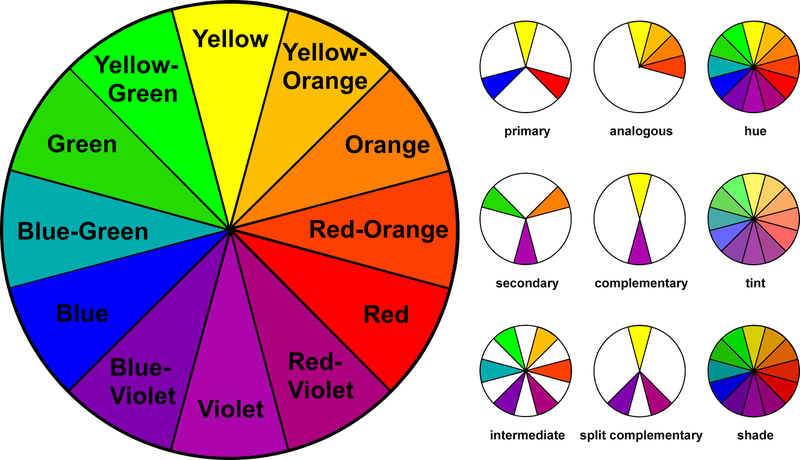@janet11,
I'm no pro, but, whenever I've dabbled in paintings or even making posters, I find that using the colourwheel is
really helpful.
You draw and colour your subject first, then you look at the predominant colour you've used on that subject - if it's a human, it might well be that the predominant colour is the one you used to do their clothing as that tends to cover the biggest area of a human subject. Whatever the subject, assess what the predominant colour you've used is and then use the colourwheel to find complementary colours for the background to really make your subject leap off the page (complementary colours are the ones opposite your subject's predominant colour on the wheel below).
Then, you just have to choose a background that would naturally have those colours.
For example, say I painted a madonna and she's wearing the traditional blue garb. She's just floating there now on a blank white canvas background I haven't painted yet. I need a nice background. I look at the wheel. I see that
blue is complemented by
oranges,
reds and
yellows. What background might use those colours? I know! I'm going to go for a landscape with a lot of sky and that sky is going to be at sunset (red, yellow and orange).
That should look good against my blue subject and really make it jump off the page.
BUT
Alternatively, I might want my painting to be more sedate and less aggressive on the senses. I might not want the subject to leap off the page. If so, I choose the colours immediately next to your subject's predominant colour. So, if I want my painting of the
blue Madonna to feel more relaxing and calming, I see that
greens,
blue-greens and
violets are closely related to my blue. What background might use those colours? Could go for a field at night-time? Simply a window with a violet velvet curtain and a green field beyond? The sea? Anything that uses those related colours really. I know those colours will produce a soft painting.
So, to summarise -
Calm painting = background using colours next to my dominant subject colour.
Vivid painting = background using colours opposite my dominant subject colour.
Again, I'm no pro, but I usually find this works for my tastes.
Hope this helps! Post your results, please. Would love to see your finished work.
